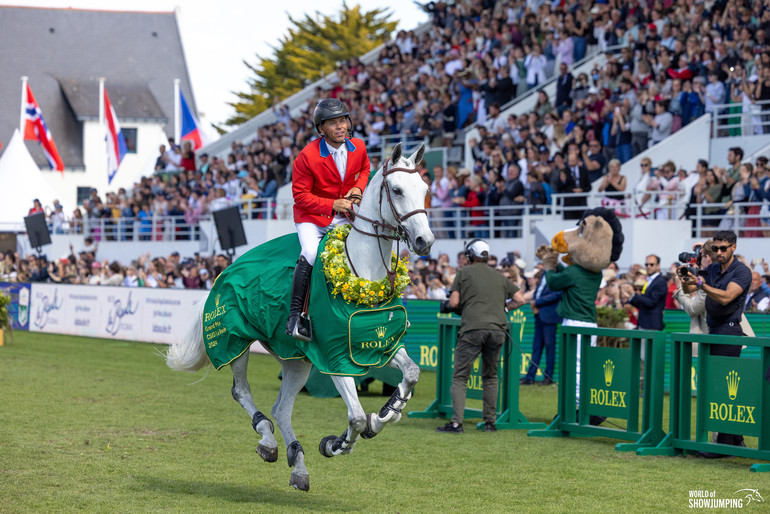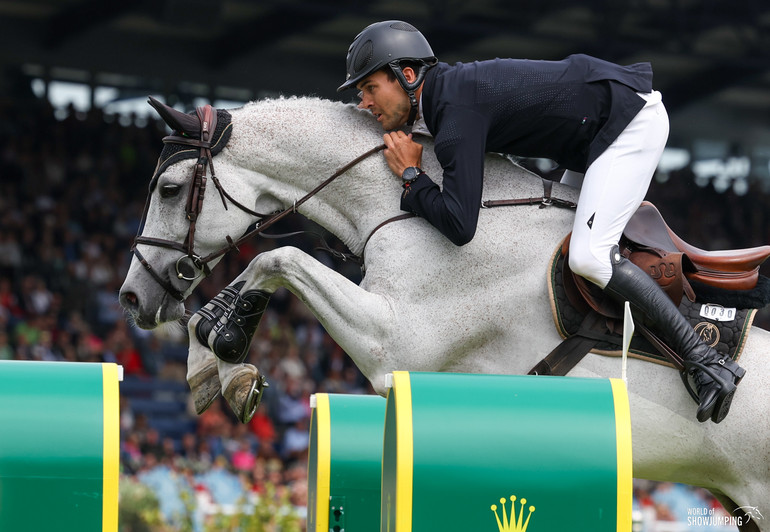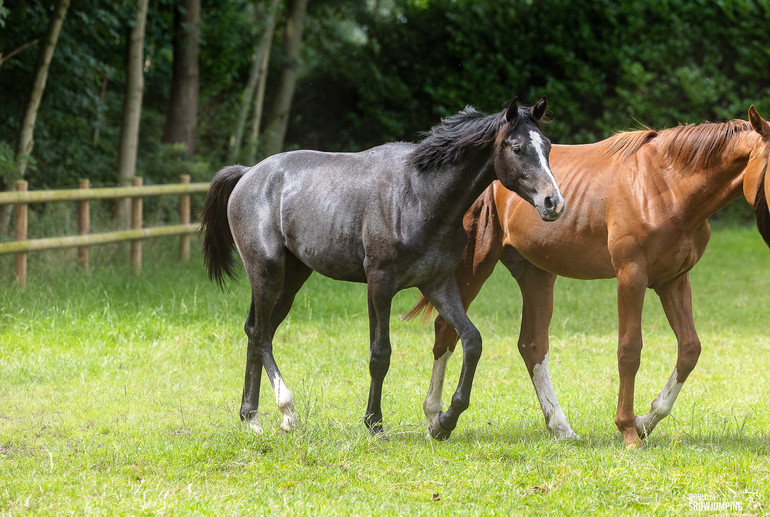“It is like a dream, I never thought we would achieve something like this. It is special, and something that for sure won’t happen again,” Wilfried Sandmann, the breeder of Kent Farrington’s Greya (Colestus x Contender) and Eugenio Garza Perez’s Contago (Cornet Obolensky x Cassini II), tells World of Showjumping about breeding two horses that were selected for the 2024 Paris Olympic Games.
With Farrington in the saddle, Greya recently won the Longines FEI Jumping World Cup at Traverse City and this summer she also topped the Rolex Grand Prix of La Baule. Over the last two seasons, Contago has impressed with Garza Perez – finishing 5th in the Rolex Grand Prix of Aachen last year and helping Mexico to a second place in this year’s Mercedes-Benz Nations Cup of Aachen after a double clear round.
Cousins
Success at the highest level is not the only common denominator for the two horses though; Greya’s dam Contessa (Contender x Landkraiser) and Contago’s dam Cassandra (Cassini II x Landkraiser) are both daughters of Landgraefin (Landkraiser x Perser XX) – a mare that Wilfried was gifted by his father Johannes back in 2001 when he took over his breeding program.
“My father used to breed and Landgraefin was one of the mares left in our stable at the time. I took over from my father, and continued breeding with her,” he tells. “Landgraefin has a lot of blood in her pedigree through Perser, a thoroughbred who is said to give a lot of heart, and a bit of Trakehner from her dam’s side.”
Based in Hüven, Germany, Wilfried has bred 78 foals over the years. “We breed around three foals every year, sometimes none, sometimes more. However, three is a good number; it is enough, it does not have to be more than that,” Wilfried says. “We usually keep the horses until they have jumped a few courses. They are introduced to the saddle here at home, and they do their first jumps here and sometimes also their first shows. For a few years now, we have worked together with Johannes Ehning, so when the horses are five, they go to him for further education.”
Exceptional talent
With Greya and Contago, their exceptional talent was obvious and both horses were sold early on. “They left from Johannes very quickly, as it was pretty clear that they had something special – they were better than others. Both horses were sold when they were five – Stevie Macken bought Contago, and Christoph Zimmermann bought Greya,” Wilfried tells.
“Contago – like many of our horses – was very sweet to handle, he was brave and polite, and wanted to be cuddled,” Wilfried tells. “He was sensitive as a youngster, so we spent a lot of time hacking him out during his fourth year. When he then came to Johannes, he was a very easy horse. Contago definitely showed his quality from the beginning though.”
“Greya was a real mare, but Johannes said he had a good feeling on her. Her jump was good, but it was clear that she would need a special rider; she could not be ridden in a very traditional way, she had her own opinions and needed freedom. Luckily, she is now with Kent, who compromises with her, because you cannot really tell her what to do..
"Where the horses end up, and who the rider is, always play a big part in how the horses turn out,” Wilfried points out.
Heart and blood
“Contago’s mother Cassandra had 13 foals, and in addition to Contago, also Quintini ended up jumping at 1.60m level with Ireland’s Max Wachmann and Belgium’s Pieter Clemens. Originally, Jos Lansink bought him as a 6-year-old from us. Cassandra is now 19, and she will have her last foal next year through an embryo transfer,” Wilfried tells about his special dam-line. “Greya’s mother Contessa carried Greya herself and she has since had three foals through embryo transfer. She is now 21 and is retired from breeding, as is Cassandra.”
“Greya and Contago have a lot heart and blood, and luckily, they have both found their way into the right hands. Their grandmother Landgraefin was actually unrideable, it just did not work with her, even though we tried. We could see that she really wanted to jump, but she was just too wild. Maybe we should not have bred with her in the first place, but she was the only mare we had at the time,” Wilfried smiles.
“And in the end, her offspring turned out very well. Contessa competed at 1.45m level herself and Cassandra was a winning foal with a 9.5 for her walk and for the rest she got 10.0. I got a lot of offers on her, however, I decided to breed with her. Landgraefin also left Calida that was successful in 1.60m classes and Cortina Grande that jumped 1.50m classes.”
“It is never a guarantee that the same breeding brings the same outcome, but I don’t want to lose the line from these two mares – and this line is all we want to breed with. We have tried two other lines during the years, but they didn’t give us the sport horses we wished for. At the moment, we have four active mares from the Landgraefin line,” Wilfried tells.
“Half of our foals are born through embryo transfers and half of the pregnancies are carried by the actual mother, but we want to go back to the natural way. We have used embryo transfer if the mares cannot carry the foals themselves due to health issues, or with young mares that are still in sport. Even though it has always worked well, we don’t want to be a factory. First of all, breeding is our hobby, and we want to have fun, that is the most important thing for us. However, our goal has always been to breed good horses for the sport,” Wilfried concludes.
2.10.2024 No reproduction of any of the content in this article will be accepted without a written permission, all rights reserved © World of Showjumping.com. If copyright violations occur, a penalty fee will apply.













